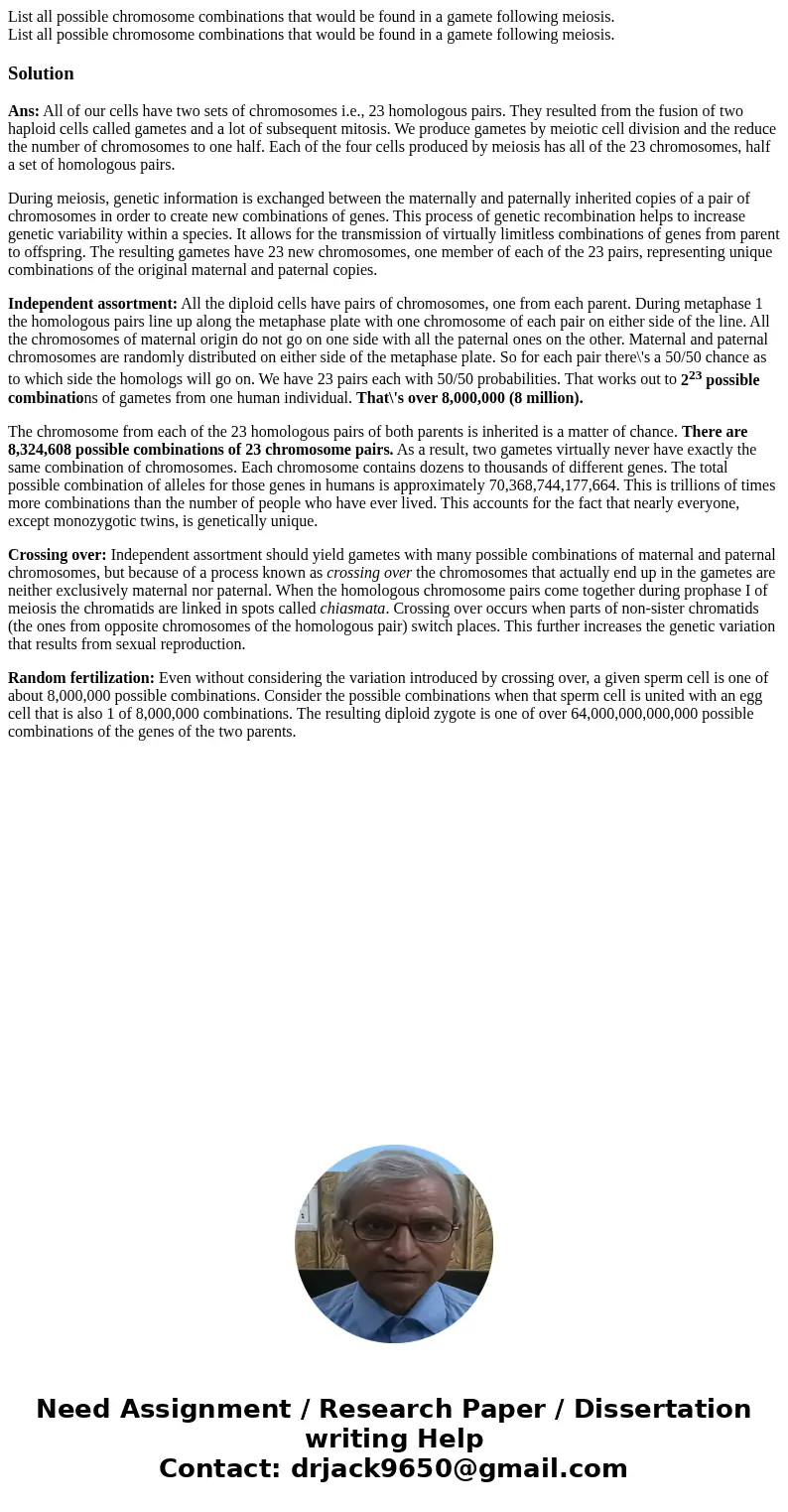List all possible chromosome combinations that would be foun
Solution
Ans: All of our cells have two sets of chromosomes i.e., 23 homologous pairs. They resulted from the fusion of two haploid cells called gametes and a lot of subsequent mitosis. We produce gametes by meiotic cell division and the reduce the number of chromosomes to one half. Each of the four cells produced by meiosis has all of the 23 chromosomes, half a set of homologous pairs.
During meiosis, genetic information is exchanged between the maternally and paternally inherited copies of a pair of chromosomes in order to create new combinations of genes. This process of genetic recombination helps to increase genetic variability within a species. It allows for the transmission of virtually limitless combinations of genes from parent to offspring. The resulting gametes have 23 new chromosomes, one member of each of the 23 pairs, representing unique combinations of the original maternal and paternal copies.
Independent assortment: All the diploid cells have pairs of chromosomes, one from each parent. During metaphase 1 the homologous pairs line up along the metaphase plate with one chromosome of each pair on either side of the line. All the chromosomes of maternal origin do not go on one side with all the paternal ones on the other. Maternal and paternal chromosomes are randomly distributed on either side of the metaphase plate. So for each pair there\'s a 50/50 chance as to which side the homologs will go on. We have 23 pairs each with 50/50 probabilities. That works out to 223 possible combinations of gametes from one human individual. That\'s over 8,000,000 (8 million).
The chromosome from each of the 23 homologous pairs of both parents is inherited is a matter of chance. There are 8,324,608 possible combinations of 23 chromosome pairs. As a result, two gametes virtually never have exactly the same combination of chromosomes. Each chromosome contains dozens to thousands of different genes. The total possible combination of alleles for those genes in humans is approximately 70,368,744,177,664. This is trillions of times more combinations than the number of people who have ever lived. This accounts for the fact that nearly everyone, except monozygotic twins, is genetically unique.
Crossing over: Independent assortment should yield gametes with many possible combinations of maternal and paternal chromosomes, but because of a process known as crossing over the chromosomes that actually end up in the gametes are neither exclusively maternal nor paternal. When the homologous chromosome pairs come together during prophase I of meiosis the chromatids are linked in spots called chiasmata. Crossing over occurs when parts of non-sister chromatids (the ones from opposite chromosomes of the homologous pair) switch places. This further increases the genetic variation that results from sexual reproduction.
Random fertilization: Even without considering the variation introduced by crossing over, a given sperm cell is one of about 8,000,000 possible combinations. Consider the possible combinations when that sperm cell is united with an egg cell that is also 1 of 8,000,000 combinations. The resulting diploid zygote is one of over 64,000,000,000,000 possible combinations of the genes of the two parents.

 Homework Sourse
Homework Sourse